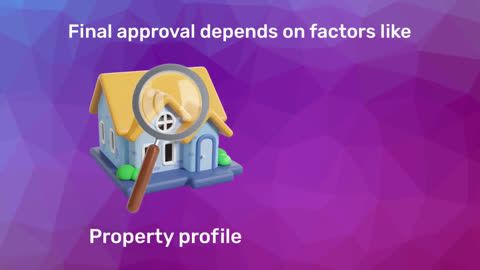What is the principal value?
Simply put, the principal value is the original loan amount you borrow from a lender. For example, if you take out a home loan of ₹50 lakh, the ₹50 lakh is your principal value. This figure excludes any interest, taxes, or fees that might be added to your overall repayment amount.Your principal value directly affects the interest that you will pay over time. The higher the principal, the greater the total interest, as lenders calculate interest as a percentage of the principal value.
How principal value affects your home loan
The principal value influences several aspects of your home loan:1. EMI calculation: The EMI you pay each month is derived from the principal value along with the applicable interest rate. A higher principal means higher EMIs.
2. Interest payments: Interest is calculated on the outstanding principal. Therefore, a larger principal value results in higher interest payments over the loan’s tenure.
3. Loan tenure: A larger principal value could extend the loan tenure if you opt for lower EMIs. Conversely, reducing the principal value can shorten the tenure if you maintain or increase your EMI payments.
4. Total loan cost: The total amount that you repay over the life of the loan is significantly affected by the principal value. Higher principal values generally lead to more substantial total repayment amounts due to increased interest costs.
Principal vs. interest: Key differences
| Aspect | Principal value | Interest |
| Definition | The original loan amount borrowed. | The cost charged by the lender on the principal amount. |
| Impact on EMI | Determines the base EMI amount. | Affects the EMI amount as it is calculated on the principal. |
| Repayment | Reduces with each EMI payment. | Calculated based on the remaining principal and decreases as the principal is repaid. |
| Total cost | Does not vary unless the principal amount is altered. | Adds to the total cost of the loan over time. |
| Loan tenure | Directly influences the loan tenure if the EMI amount is fixed. | Influences how long it takes to repay the loan if the EMI amount is fixed. |
Calculating the principal value: Step-by-step guide
1. Identify the total loan amount: Determine the initial loan amount borrowed, which is the principal value.2. Understand the EMI structure: Know how your EMI is structured, whether it is a fixed or variable rate EMI.
3. Subtract repayments: To find the remaining principal at any given point, subtract the total repayments made from the original principal value.
4. Use a home loan EMI calculator: For precise calculations, utilise a home loan EMI calculator to input your loan amount, tenure, and interest rate to see how the principal value impacts your EMI and repayment schedule.
5. Consult your lender: Your lender can provide a detailed amortisation schedule that shows how your principal value decreases over time with each EMI payment.
Impact of principal value on EMIs
The principal value directly affects your EMIs. Higher principal values lead to higher EMIs, assuming the tenure remains constant. Conversely, lowering the principal value either by making prepayments or choosing a smaller loan amount can reduce your EMI. Reducing your principal amount early can provide significant savings on interest and potentially shorten your loan tenure.How to reduce the principal amount of your home loan
1. Make prepayments: Regularly making prepayments can reduce the principal amount faster, which in turn reduces the interest payable and shortens the loan tenure.2. Increase EMI payments: Opting for higher EMIs can reduce the principal balance more quickly compared to standard payments.
3. Refinance your loan: Refinancing can offer better terms or lower interest rates, which can reduce your principal value effectively if the new loan has a shorter tenure.
4. Apply windfalls: Use bonuses, tax refunds, or other windfalls to make lump sum payments towards the principal.
Principal value in other loan types
The concept of principal value extends beyond home loans. In personal loans, auto loans, and education loans, the principal value is the original amount borrowed, and its repayment is similarly structured. Understanding how principal values work across different loan types helps in managing overall debt more effectively.Common mistakes to avoid when managing principal value
- Neglecting prepayments: Failing to make prepayments when possible can result in paying more interest over time.
- Ignoring loan terms: Not reviewing loan terms regularly might lead to missed opportunities for reducing the principal amount or refinancing.
- Misjudging EMI affordability: Underestimating the impact of higher principal on EMI payments can strain your finances.
- Failing to use calculators: Not using tools like home loan EMI calculators can lead to poor planning and financial stress.
Benefits of reducing principal value early
- Interest savings: Early reduction of the principal value leads to lower interest payments over the loan tenure.
- Shorter loan tenure: By reducing the principal amount early, you can shorten your loan tenure, saving on long-term costs.
- Improved financial flexibility: Less principal balance means reduced EMI burden and better financial flexibility.
- Enhanced credit score: Timely and early repayment can positively impact your credit score.
Principal value and tax benefits
Reducing the principal value of your home loan not only saves on interest but can also affect your tax benefits. Under Section 24(b) of the Income Tax Act, the interest on home loans is deductible, which indirectly influences how much you can claim back. Additionally, principal repayments qualify for deductions under Section 80C, which can further benefit your tax planning.Additional read: Home loan tax benefits
Explore Bajaj Housing Finance Home Loan
If you are considering a home loan or looking for a lender that offers flexible repayment options, Bajaj Housing Finance Home Loan could be your answer. With competitive interest rates and options like part-prepayment, balance transfer, and top-up loans, Bajaj Housing Finance ensures that you can manage your principal value effectively, keeping your financial commitments within control.Here are the benefits of choosing Bajaj Housing Finance Home Loan
Attractive interest rates: Enjoy competitive interest rates, making home ownership more affordable.
Long repayment tenure: You can choose a repayment tenure that suits your financial situation, ensuring that managing your home loan is hassle-free.
Quick disbursal: Experience a swift and hassle-free loan application and disbursal process, helping you move into your dream home faster.
Minimal documentation: Our streamlined documentation process makes applying for a home loan easy and convenient.
Ready to take the next step toward home ownership? Start the process today and apply for a Bajaj Housing Finance Home Loan.




